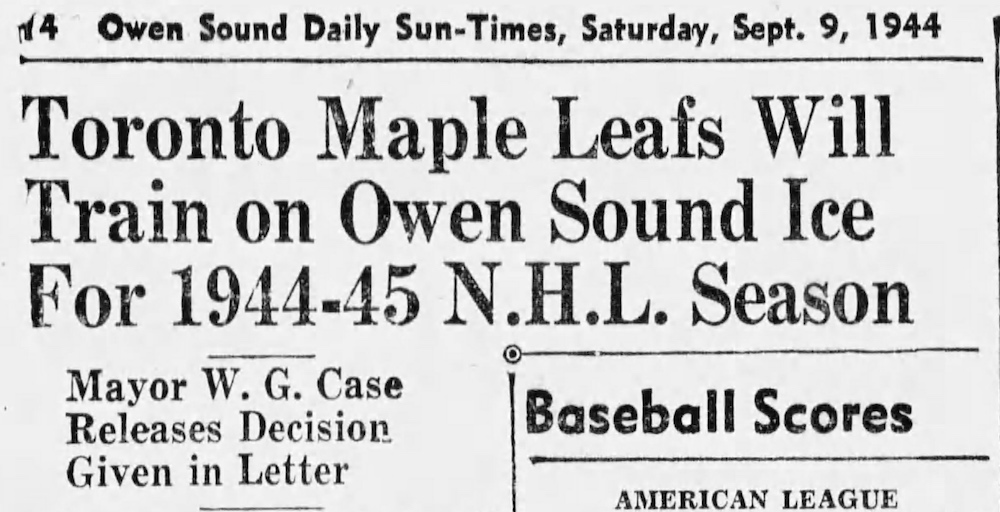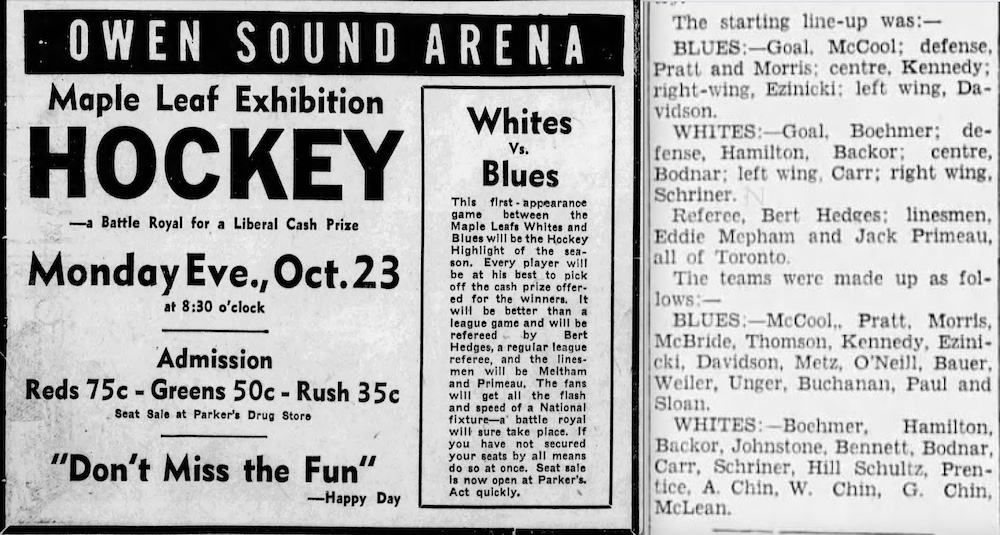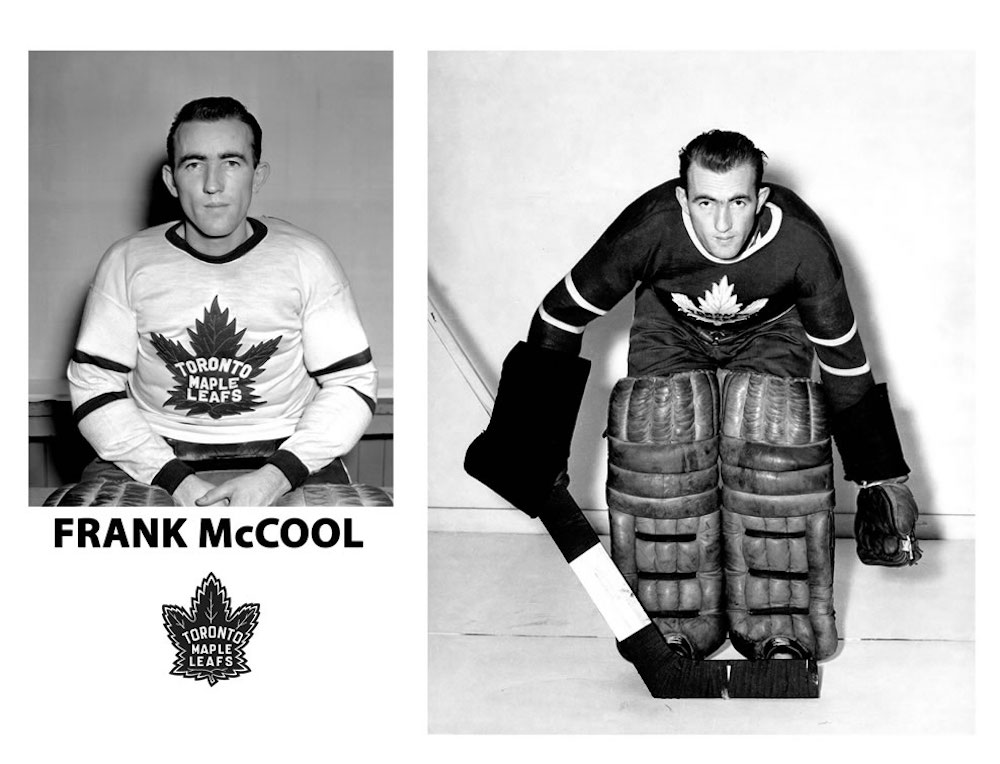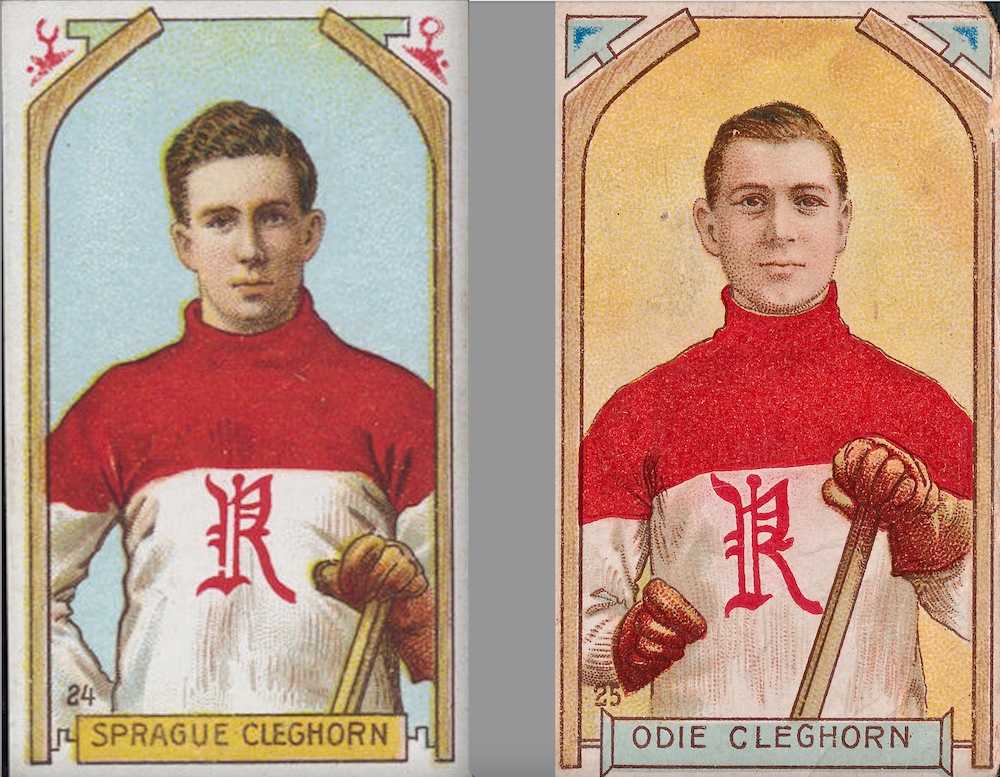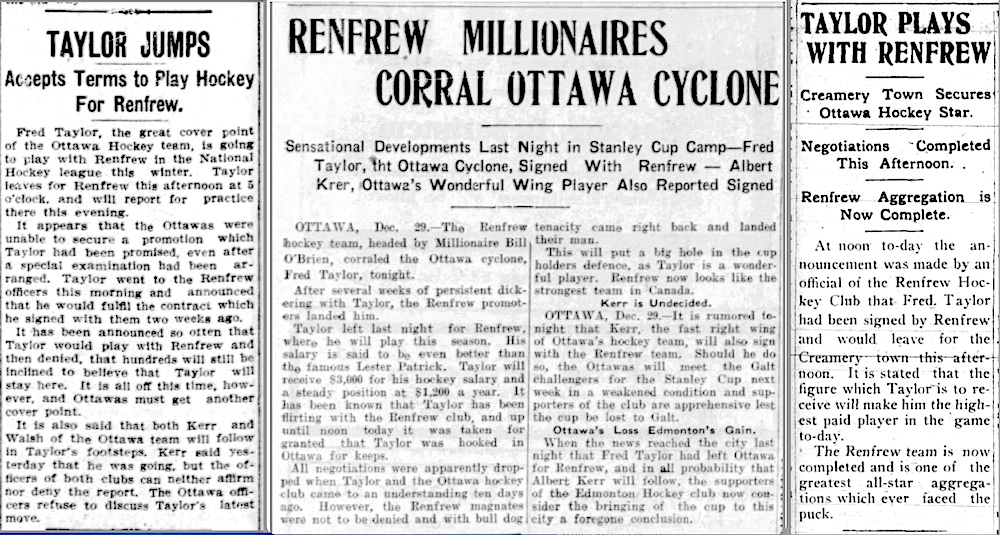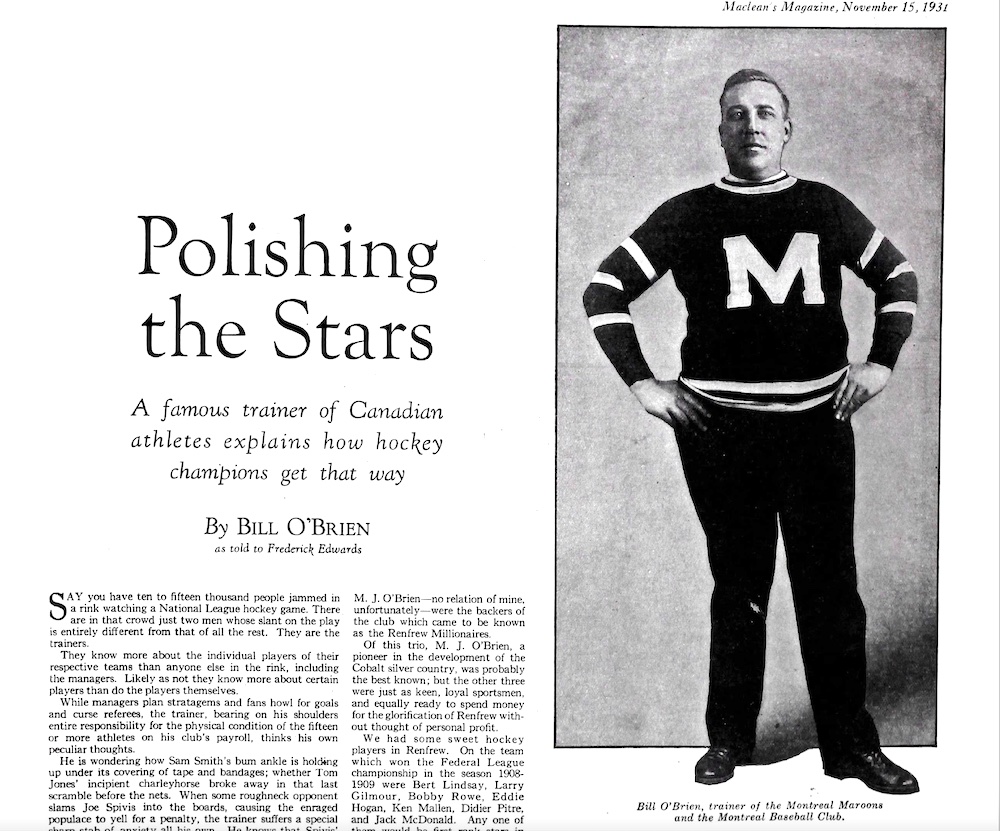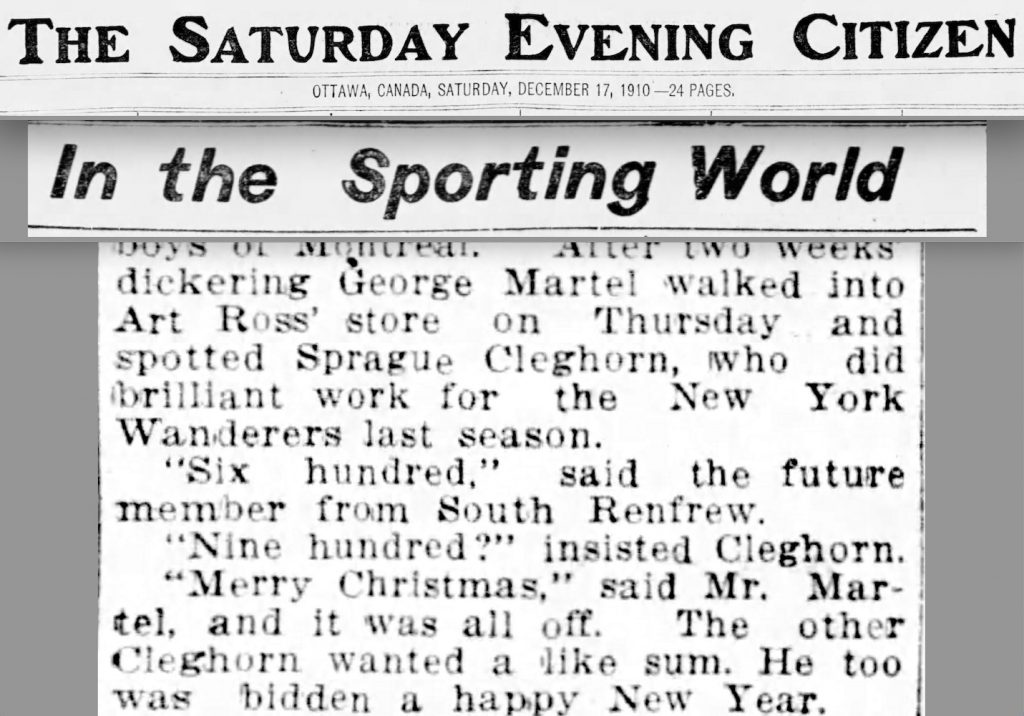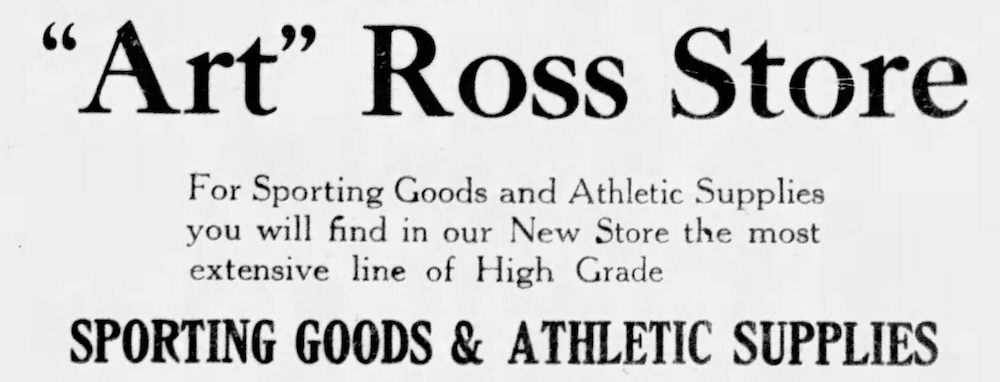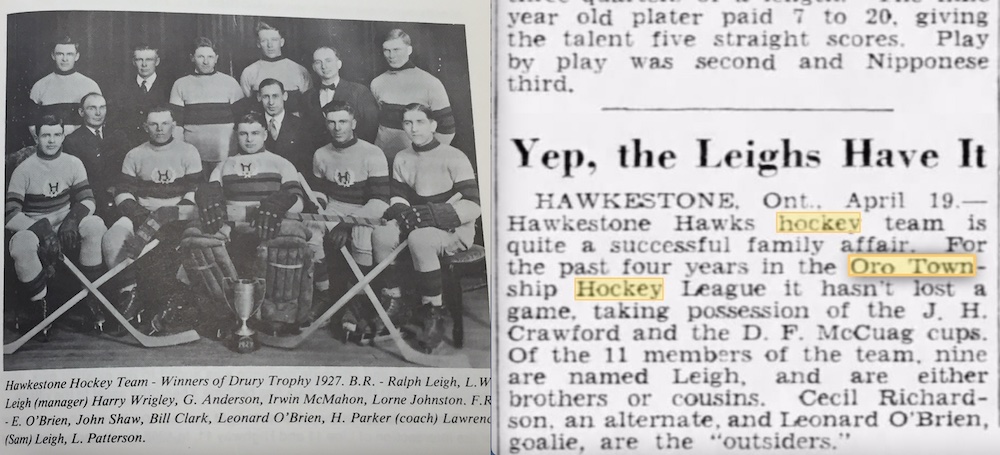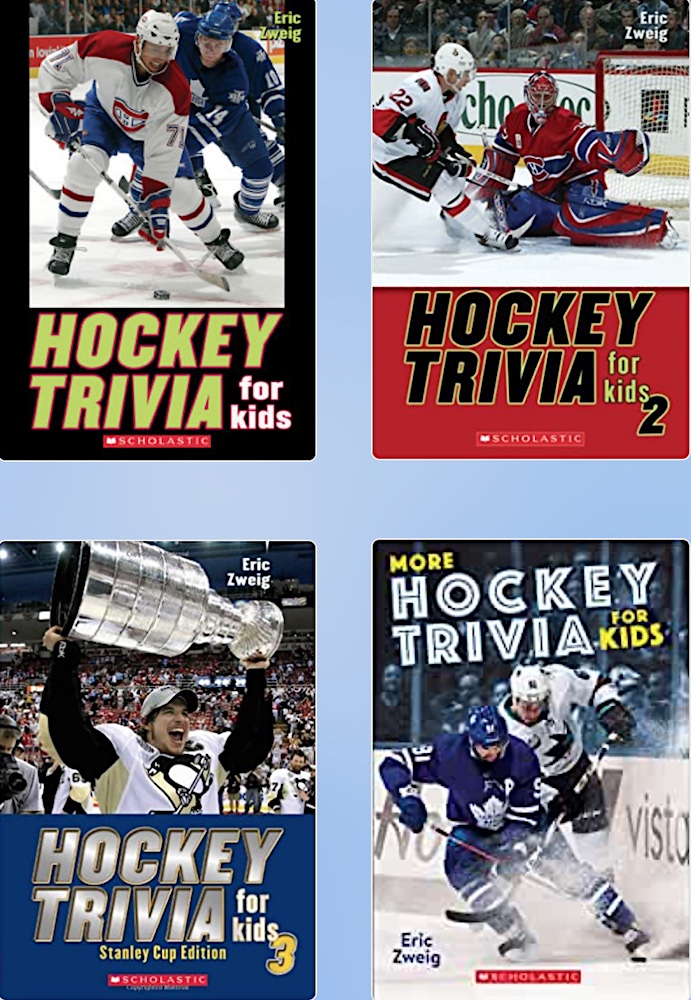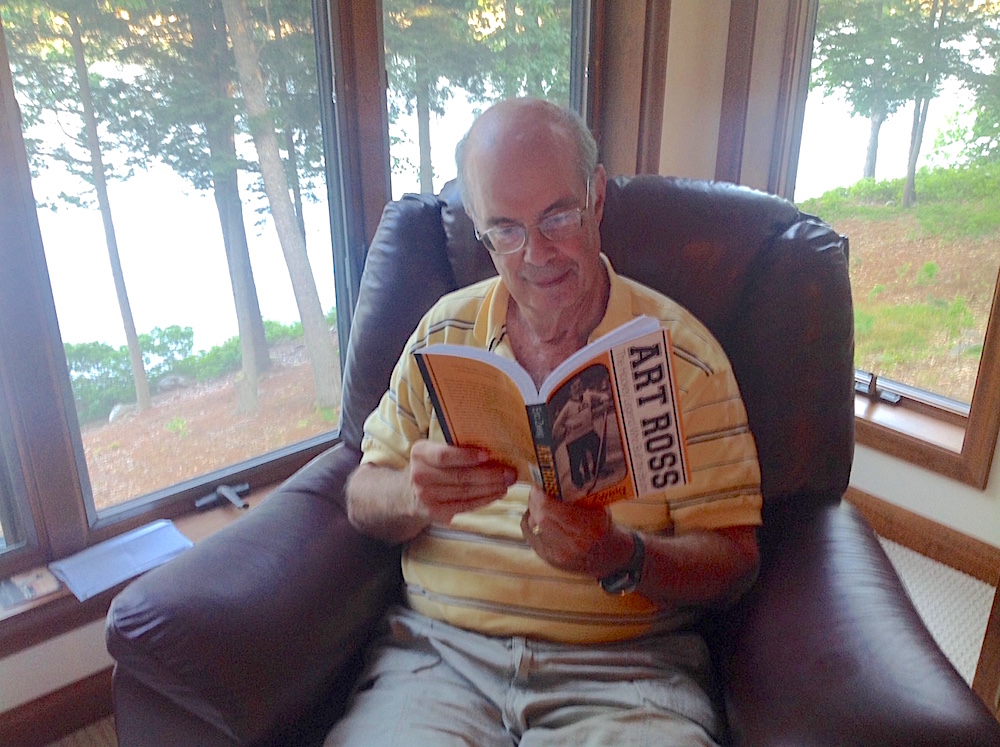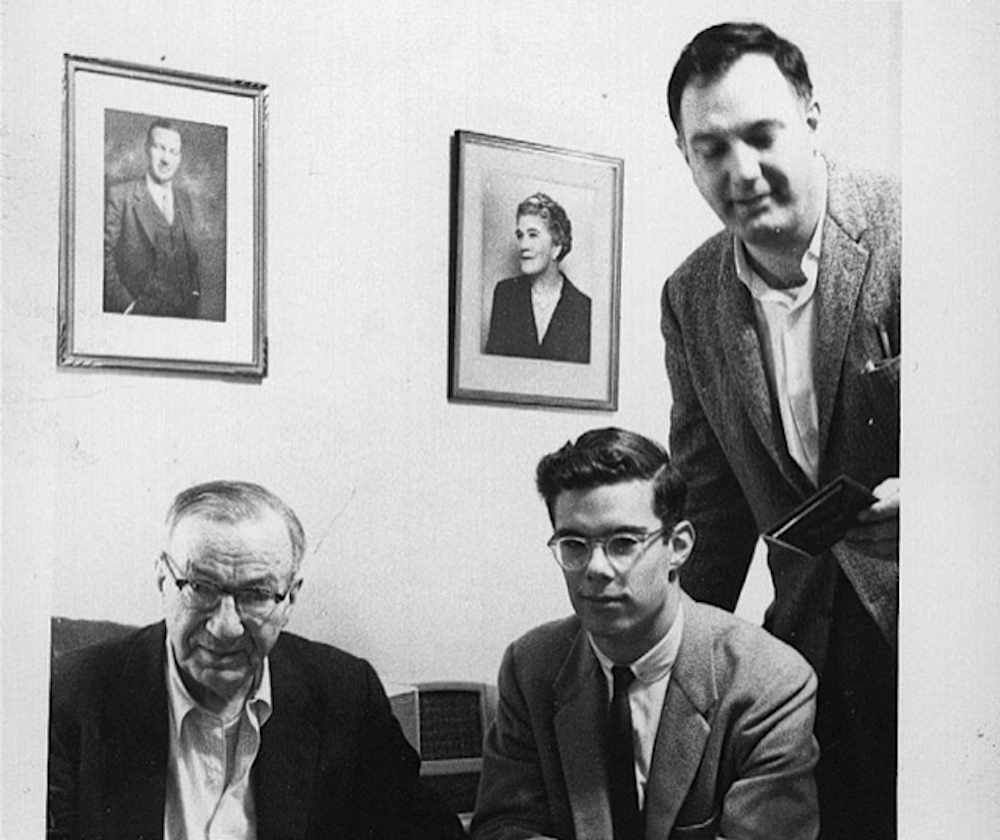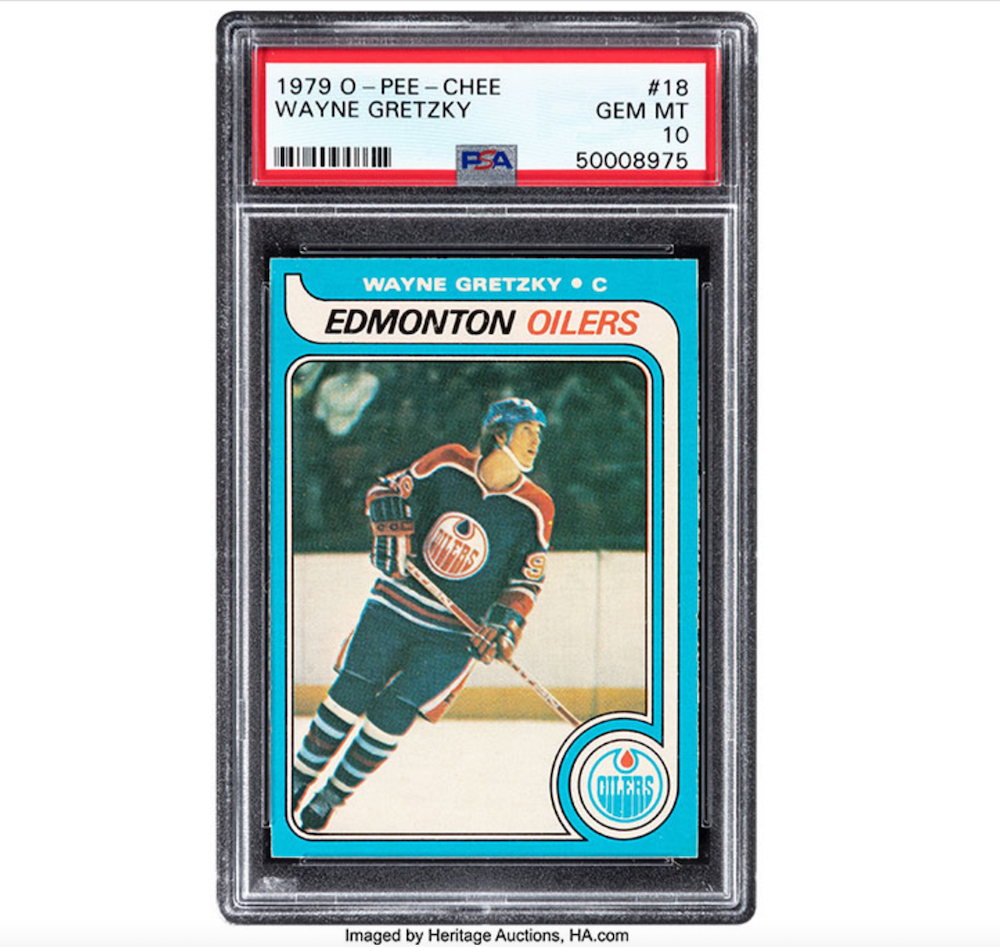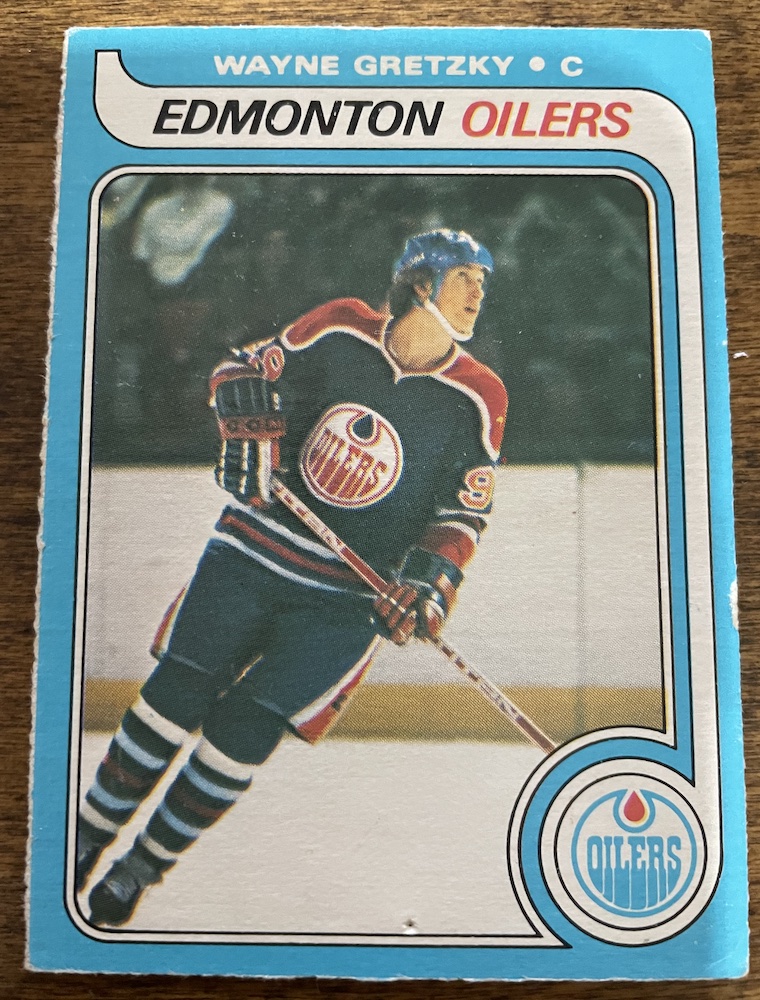The announcement on Sunday that Buck Martinez will be stepping away from Blue Jays broadcasts for a while to seek treatment for cancer has me feeling sad and nostalgic. Nostalgic is certainly not a new feeling for me. I like history; I write about history; and I’m lucky to have had a very happy childhood to recall. Yes, I like to look back … even to the sad things that have happened in my life.
My grandfather (my father’s father) died 50 years ago this summer. For my brothers and me, now all in our mid 50s, that is almost an entire lifetime ago. Even I, as the oldest, have very few memories of him … and the things I do remember, I don’t really know if I actually remember, or just know the stories from years of re-telling them.
From what I heard from my father in later years, his parents weren’t great parents. I think they were much more in love with each other than with the idea of raising children. My father, and his sister (my Aunt Monica) certainly weren’t neglected, or abused, or anything awful. I just think they weren’t surrounded by the same obvious love my brothers and I (and I hope my cousins) were. I remember my father telling me once that the only time his father had said he was proud of him was when I was born. I’m not sure that was much of an accomplishment on my father’s part! But like many men of an older generations who weren’t great fathers, my grandfather was a very good grandfather.
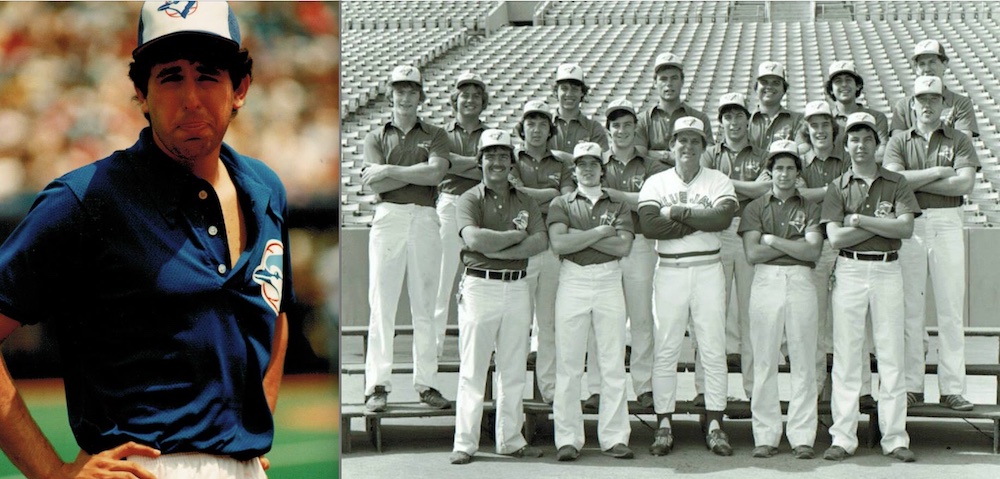
In the few short years he had with us, Poppa Moe spent lots of time with us. I remember going to a movie with him. (The Gnome-mobile. I was probably only four years old. I don’t remember anything about the plot, but I can still hear parts of the song in my head.) I know he took David and Jonathan to Toronto Marlies hockey games. (Don’t remember why I didn’t go.) And I remember the delight he took when we were riding in his car and Jonathan, who was probably only about three or four years old, would see a sign for an Esso gas station and spell out the letters forwards and backwards.
“E-S-S-O.”
“O-S-S-E!”
I certainly remember meals with Poppa Moe and Nanny Betty at Smitty’s Pancake House in Yorkdale Mall. Poppa Moe used to say to us, “I can’t say pancakes. I can only say pwancakes.”
And we’d always shriek back, “You just said it!”
He’d say, “No. I didn’t say pancakes. I can only say pwancakes.”
“You just said it!” we’d shriek again.

I’m pretty sure the last time I saw him — at least the last memory I have of seeing him — was at Smitty’s. It would have been 50 years ago next month, probably in mid-to-late May of 1972.
David and Poppa Moe had made a bet on the 1972 Stanley Cup Final. David picked the Boston Bruins over the New York Rangers. I seem to have a memory of watching one of the games in that series at my grandparents’ house on Glen Cedar Road near Bathurst and Eglinton … though that might be incorrect, because they were certainly living in an apartment on Walmer Road (near St. Clair and Spadina) by that summer.
Anyway, the Bruins won the Cup and David won the bet.
The prize?
One dollar!
Over dinner at Smitty’s after the series (which ended on May 11, a Thursday, so perhaps as soon as that coming weekend though maybe not until later in the month), I remember Poppa Moe asking David how he’d like to be paid. Did he want a dollar bill, or four quarters … or a bag of pennies that might have more than 100 pennies in it? David chose the bag of pennies, and Poppa Moe handed it over.
I’m sure we counted it, though perhaps not until we got home.
I don’t remember how many pennies were actually in it.
And that was, I’m pretty sure, the last time I saw him.
Soon after that, Poppa Moe was diagnosed with cancer. I used to think it was liver cancer, but it may have been lung cancer. (He was certainly a smoker.) Whichever it was, he’d probably been sick for a while already. He didn’t last long; dying on August 26, 1972. I guess, as young kids, we were spared the sight of seeing him sick.
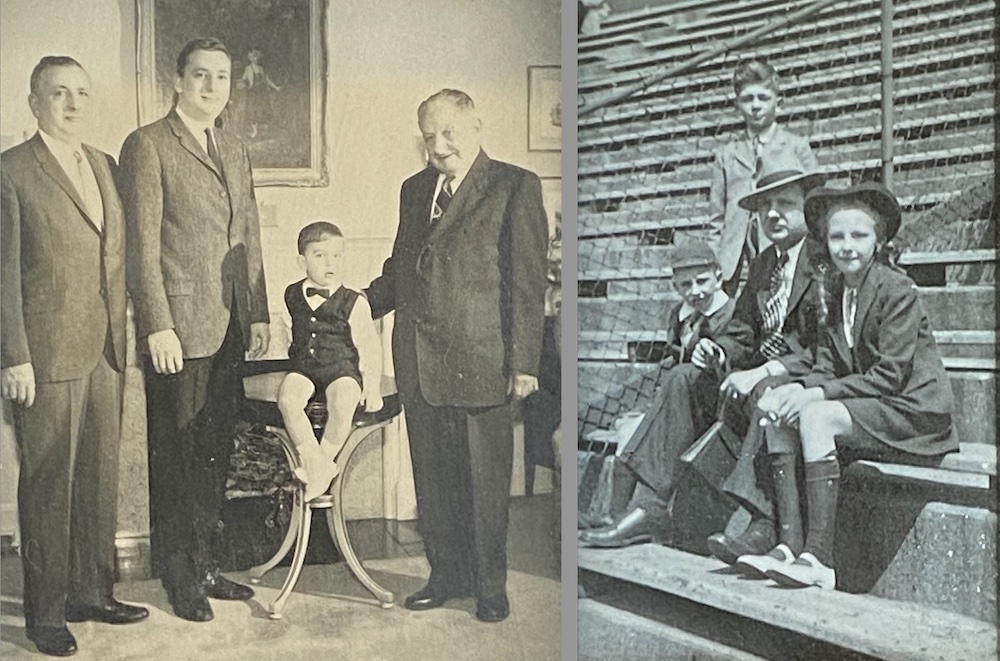
During that summer, I remember my father taking me to dinner at my grandparents’ new apartment. Nanny broiled steaks … which my father would later say was one of the few things she ever actually cooked. As I remember it, we were on our way to a Toronto Argonauts football game. (Having just checked the schedule online, I see that the Argos played their first two home games that summer on August 3 and August 16, so I’d guess August 3 … though perhaps it was in July and not actually before a football game.) I remember Nanny serving the steaks to us at the small kitchen table. Poppa Moe wasn’t there. He was in the bed room. Resting. (Dying.)
I wasn’t taken in to see him. Or if I was, I don’t remember it. My last memory of him is from the payoff dinner at Smitty’s … but maybe I just choose to remember that because it’s a nicer story.
My grandfather was a big sports fan. And that trait was certainly passed down to my father, and then to me and my brothers. (There are plenty of sports fans on my mother’s side too, so we come by it honestly!) Poppa Moe and my dad went to Argos games, and then my dad took us. Football, and the Argos, were my favourite, until the Blue Jays and baseball took over. I was on the Blue Jays ground crew from 1981 through 1985. Those were my last two years of high school and three years of university, and the “worst-to-first” years in Blue Jays history.
Buck Martinez was traded to Toronto on May 10, 1981, and got into his first game the following night. Once Bobby Cox arrived as manager in 1982, Buck became a big part of his platoon plans at catcher with Ernie Whitt and the Blue Jays finally got good!

Buck had two great moments during the first pennant-winning season of 1985. The first came on June 6 against the Detroit Tigers. Ernie Whitt actually caught most of that game, as Jimmy Key took a perfect game into the sixth inning, and a no-hitter into the ninth. Key wound up going 10 shutouts innings of two-hit ball. Buck came on in the 11th inning after Manny Lee ran for Whitt. He caught Gary Lavelle in the top of the 11th and Jim Acker in the 12th. In the bottom of the 12th, Buck got his first at-bat of the game with one out and George Bell on first base. He was hitting just .134 at the time, and fell behind 1-and-2 in the count before taking Aurelio Lopez (Señor Smoke) deep for a two-run homer that won the game 2-0. It was a huge, confidence-boosting victory over the 1984 World Series champs!
Five weeks later, on July 9, 1985, in Seattle, Buck was involved in one of the most remarkable defensive plays in Blue Jays history. With one out in the bottom of the third, he tagged out Phil Bradley at the plate after a Jesse Barfield throw despite the fact that the collision with Bradley tore the tendons in his right ankle and broke his leg. Dazed, Buck threw the ball away trying to make a play at third base, but was still alert enough to take a return throw and tag out Gorman Thomas at the plate to complete the first and only 9-2-7-2 double play in Blue Jays history. (If you’ve never seen it, click here!)
Buck missed the rest of the season after that injury, but managed to return for a final year in 1986 before retiring to the broadcast booth. I like to think I had a small part in his post-playing career, as I read lines with him once after a game while he was preparing to tape a radio commercial with Blue Jays broadcaster Tom Cheek. (Buck doesn’t remember it. I asked him about it once, a few years ago, at a Blue Jays season ticket holder event.)
It’s going to be an even tougher battle this time, but here’s wishing Buck Martinez all the best for another remarkable comeback.
